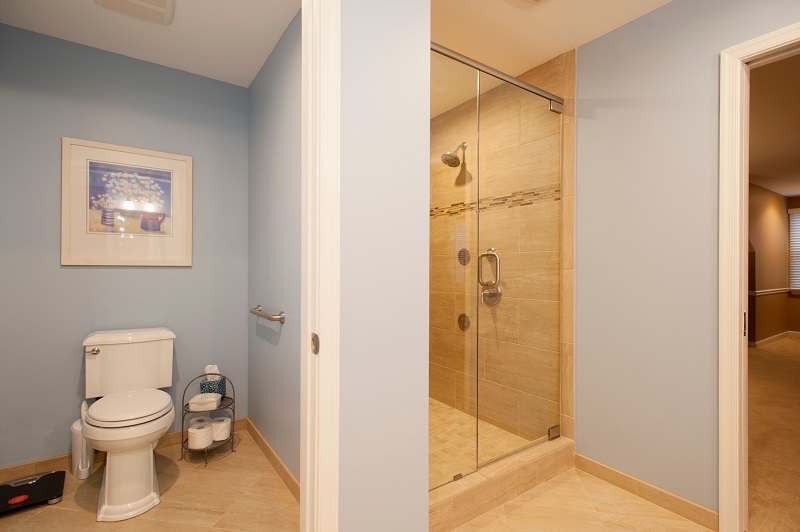.jpg)
Building safe and accessible bathrooms for the elderly and physically disabled
Form following function
There are a few approaches one can take to make someone with limited mobility comfortable. Some designers are more concerned with color and style, but we recommend contracting a builder with hands-on experience that can advise on, for example, the best slip-resistant tile for your flooring.
While you shouldn't purchase an ugly tile as a result of its ADA compliance, you should prioritize ease of cleaning and texture when selecting a walking tile. It is often recommended to choose porcelain with a gritty or textured feel for the floor and a slick ceramic tile for the walls to facilitate the bathroom cleaning process. Usability is incredibly important when a (potentially vulnerable) loved one's well-being is at stake.
Adhering to ADA guidelines
When designing an ADA-compliant bathroom and shower, keep these basic principles in mind:
- Use brushed nickel for plumbing fixtures to ensure quick and easy cleaning with a guaranteed spot-free finish. Select a faucet with a high arc, or gooseneck, on it to facilitate a sink's ease-of-use. Do not discount kitchen faucets with a pull-out sprayer because they can make life much easier!
- ADA shower stall guidelines require 36" of clearance for wheelchair accessibility as well as a wall-mounted vanity. The vanity must have a skirted undercarriage to both hide its corresponding plumbing elements and make it possible to pull up a wheelchair.
- Consider converting to a walk-in shower, or curbless shower. These require sloped cement pans angled at a greater degree than conventional showers to prevent water from drenching the rest of the bathroom.
- Add an integrated shower bench along a shower's rear or side wall(s) to make it easier for handicapped individuals. Also install three to four grab bars to assist in standing, balancing, and, in the unlikely event of a slip or loss of balance, preventing falls.
- Determine if a hand-held sprayer can be secured near the built-in shower bench to make bathing easier for those with limited mobility or who require assistance bathing. The shower handle - single handles are the easiest to use - makes it possible to stop, start, and otherwise adjust the flow of water from a seated position.
